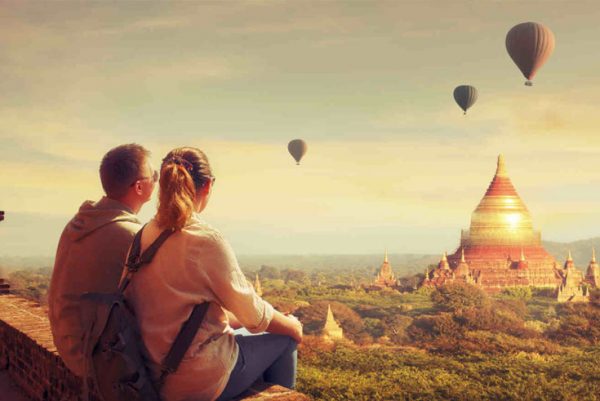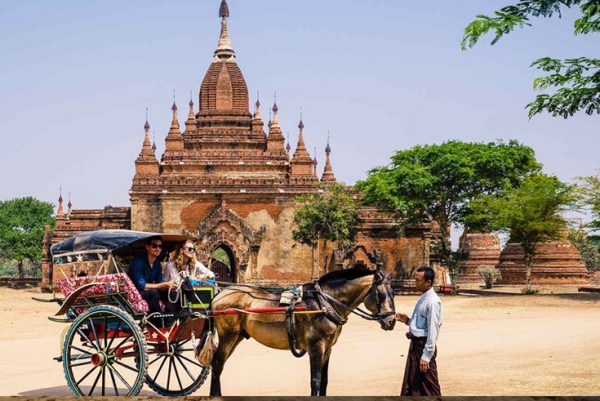Myanmar or Burma, officially the Republic of the Union of Myanmar, is located in the South East Asia, setting a boundary with Thailand and Laos on the east, Bangladesh to the west and China and India to the north, as well as having a long coastline to the west with the Bay of Bengal & the Andaman Sea.
- Biggest City: Yangon (former capital), Mandalay.
- Capital: Naypyidaw, a new settled capital since 2006
- Size: 676,578 square kilometers
- Society: 135 different ethnic groups and 8 main national races: Bamar (estimated 68% of population), Shan (10%), Kayin (7%), Rakhine people (4%), Mon (2%), Chin, Kayah and Kachin.
- Religion: Mainly Buddhist (about 85%), Animism (5%), Christian (about 4.5%) and Muslim (about 4%) and Hindu – 1.5%.
- Languages: 4 major language families: Sino-Tibetan, Tai–Kadai, Austro-Asiatic, and Indo-European. Sino-Tibetan – most widely spoken, including Burmese (official language of Myanmar – mother tongue of the Bamar), Karen, Kachin, Chin, and Chinese (mainly Hokkien).
The History
- Prehistory:
750,000 years ago: Homo erectus archeology’ evidence
25,000 BP: First evidence of Homo sapiens with stone tools in central Myanmar
10,000 and 6,000 BC: Evidence of Neolithic age in Padah-Lin Caves
Bronze Age (1,500 BC): Human remains and artefacts discovered in Monywa District
Iron Age (500 BC): Iron-working settlements in south of current Mandalay
- Pyu city-states & Mon kingdoms:
2nd century BC – 9th century: Pyu millennium in central Myanmar
6th century: the appearance of Mon People in lower Myanmar with prosperous kingdoms at Pegu and Thaton.
- Pagan Kingdom: 9th century – early 13th century: Pagan Empire, settling in Pagan (now known as Bagan): extremely important development period of Myanmar, the construction of 10,000 Buddhist Temple in Bagan, many survives until today.
- Divided Myanmar: 13th century – 18th century: four major power centres: Upper Myanmar, Lower Myanmar, the Shan States and Arakan.
- Toungoo Dynasty: 1580 – 1752, covering most of modern-day Myanmar (excluding Arakan and the far south)
- Konbaung Dynasty: 1753 – 1885
- Colonial period (1886 – 1948): British rule and Japan Occupation during World War II
- Independence (1948 – 1962): independence from the United Kingdom
- Military Rule: 1962 – 2011
- Myanmar political reforms: 2011 – 2015
- 2015 Myanmar general election: held in Myanmar on 8 November 2015, with the National League for Democracy winning a supermajority of seats in the combined national parliament.
- 06 April, 2016: Myanmar’s democracy leader, Ms. Aung San Suu Kyi becam state counselor official, giving her authority exceeding the president’s.
The culture
The Myanmar Culture has been dramatically influenced by Buddhism with more than 90% of the population. It is believed that it was the Kingdom of Pagan (Bagan) brought this religion into Myanmar in 1044. Until now, thousands of golden pagodas have still existed throughout Myanmar. Myanmar people show their respect to Buddhism by keep religious areas clean and removing their shoes to enter, even foreigners also have to comply with it. The second largest religion in Myanmar is Christians.
Burmese culture, especially language and education, is also influenced by British Rule and westernization with the role of English in business circle nowadays, besides the official language is Myanmar (Burmese).
The architecture of Myanmar (formerly known as Burma), in Southeast Asia, includes architectural styles, reflecting the impact of Buddhism and colonial heritage. Buddhist architecture takes the key role in Myanmar, being used to serve as a religious school, a community center for government or other agencies’ posts or sport activities, an entertainment center for music and dance, a guest house, etc. While most temples in central Burma reflect Burmese Style, the temple of Shan State shows the Shan Style in the constructions surrounded by small shops. Traditional houses are made mainly of bamboo and wood, then adjusted to impact of neighbor, Western nations and modernization.
Traditional Dress
The Longyi is Myanmar traditional dress worn by both male and female like a sarong. While males tie the front in a knot that hangs out, the ladies tuck it into the side. In formal occasion, men wear a longchy, including a longyi and a formal shirt, women, whereas, wear a thummy.
Cuisine
Because of diversity of ethnic groups, Myanmar has a wide variety of local food, which is typical for each ethnic minority and deep impacts of Indian, Thai, and Chinese cuisine in border area. Similar to other Asian Culture, rice is the main ingredient in Myanmar meals.
Climate and Weather
Because of a tropical monsoon climate, Myanmar has three main seasons: Cool season from November to February with dry air and warm temperature (20 – 24ºC), hot season from March to May with average temperature from 30 – 35ºC as well as rainy season from June to October with heavy rainfall and average temperature from 25 – 30ºC.













